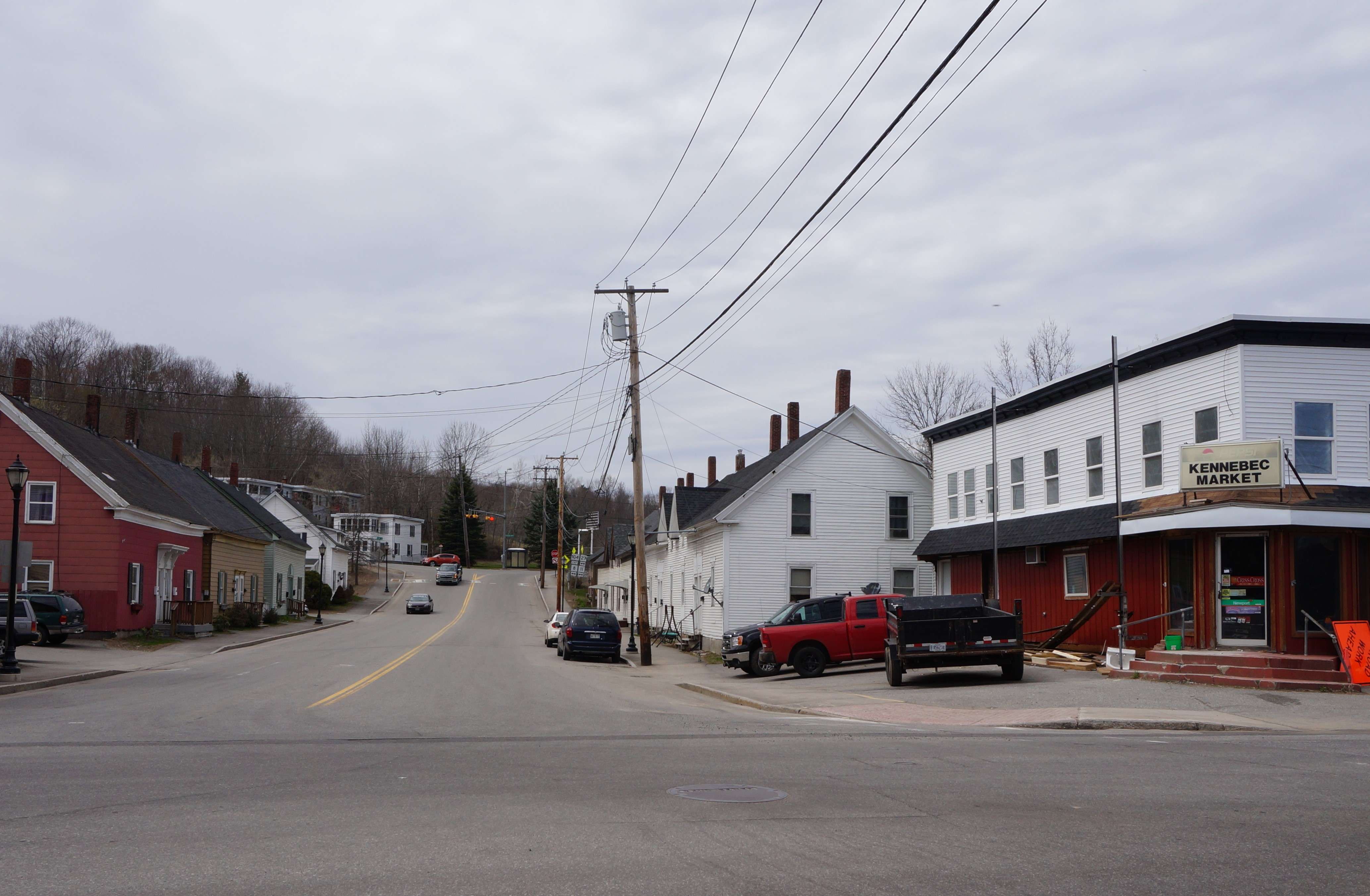
Projects at either end of Augusta's downtown add to growing residential presence
AUGUSTA — At the south end of Water Street downtown, Matt and Heather Pouliot walk through the about-to-be renovated New Purinton Brothers Block, describing how the plan for event space, retail and eight apartments will take shape.
Half a mile north, at the other end of downtown, developer Matt Boulerice lays out the vision for his project, which will include retail and four apartments in the building that most recently housed the Kennebec Market convenience store.
As plans for the properties at either end of Water Street unfold, downtown redevelopment is hitting its stride, most notably with residential property. There are 36 apartments in the five-block downtown where 10 years ago there weren't any. The Boulerice project, at 28 Water St., and the Pouliot project, at 341-347 Water St., will add 12 more. Other redevelopments underway mean that in a year or two, there will be more than 100 market-rate apartments in downtown Augusta.
There is a zero vacancy rate for the 36 already completed, said Heather Pouliot, who is president of the Augusta Downtown Alliance board of directors.
The development surge, which includes more than a dozen restaurants and bars and an increasing retail presence, is part of a new era for downtown Augusta.
The foundation of it is housing, said Matt Pouliot, who is also a real estate broker and state senator. "We need people living here for the rest of it to happen."

'Just kind of happened'
While the southern end of Water Street — the three blocks south of Bridge Street — has had a large number of development projects in the past few years, the northern end has been largely quiet.
The former Kennebec Market, a 4,4480-square-foot two-story building, was vacant and owned by Kennebec Savings Bank and listed by Hoang Realty when Boulerice, of Boulerice Management LLC in Scarborough, bought it a year ago.
Boulerice wasn't looking in that area for property. "It just kind of happened," he said.
Boulerice, who'd renovated a multi-family building at 59 Washington Ave., nearby in the Sand Hill neighborhood, is familiar with the area. His parents are Augusta natives, and his first redevelopment project was a farmhouse in Gardiner, six miles down the Kennebec River. When he's finished with the Water Street project, he plans to go upriver to Waterville and renovate a Spring Street property he recently bought.
The Water Street building is at the end of historic Bond Street, a one-block street that connects State and Water streets and is lined by seven small mid-19th century wooden houses, former housing for the Edwards Mill. The street was added to the National Register of Historic Places in 2014. The Kennebec Market, however, located in a nondescript building constructed in 1900, was not part of the designation.
Not only does it lack a historic designation, the building also wasn't in great shape when Boulerice bought it.
He acknowledged that a lot of developers wouldn't take on a property like that. As he walked through the second floor Monday, he pointed out where there had been issues — flooring had to be ripped up and replaced, walls needed to be shored up, it needed new bathrooms and kitchens, new drainage and wiring. Once he got in there, he and the construction crew started finding issues.
"A lot of people would have been scared away by the amount of work it needed," he said. But renovating buildings like it are what he does.
He worked with the city, as well as a structural engineer, to get the bones of the building back into shape. "We're not only going to bring it back to it's former glory, but it's going to be safe," he said.
Once completed, the building will have four market-rate apartments on the second floor — two two-bedroom, and two one-bedroom. He's still mulling over what to do with the ground floor, and is limited by zoning.
He said residents will pop their head in the door and tell him they hope the variety store is coming back, and that's a permitted use. He said he's considering a store that would be more of a niche market than a typical convenience store, and also possibly splitting up the ground floor for a couple of uses.
As he picked through the under-construction residential area of the building, he added, "I look at a building like this and I see the possibilities."
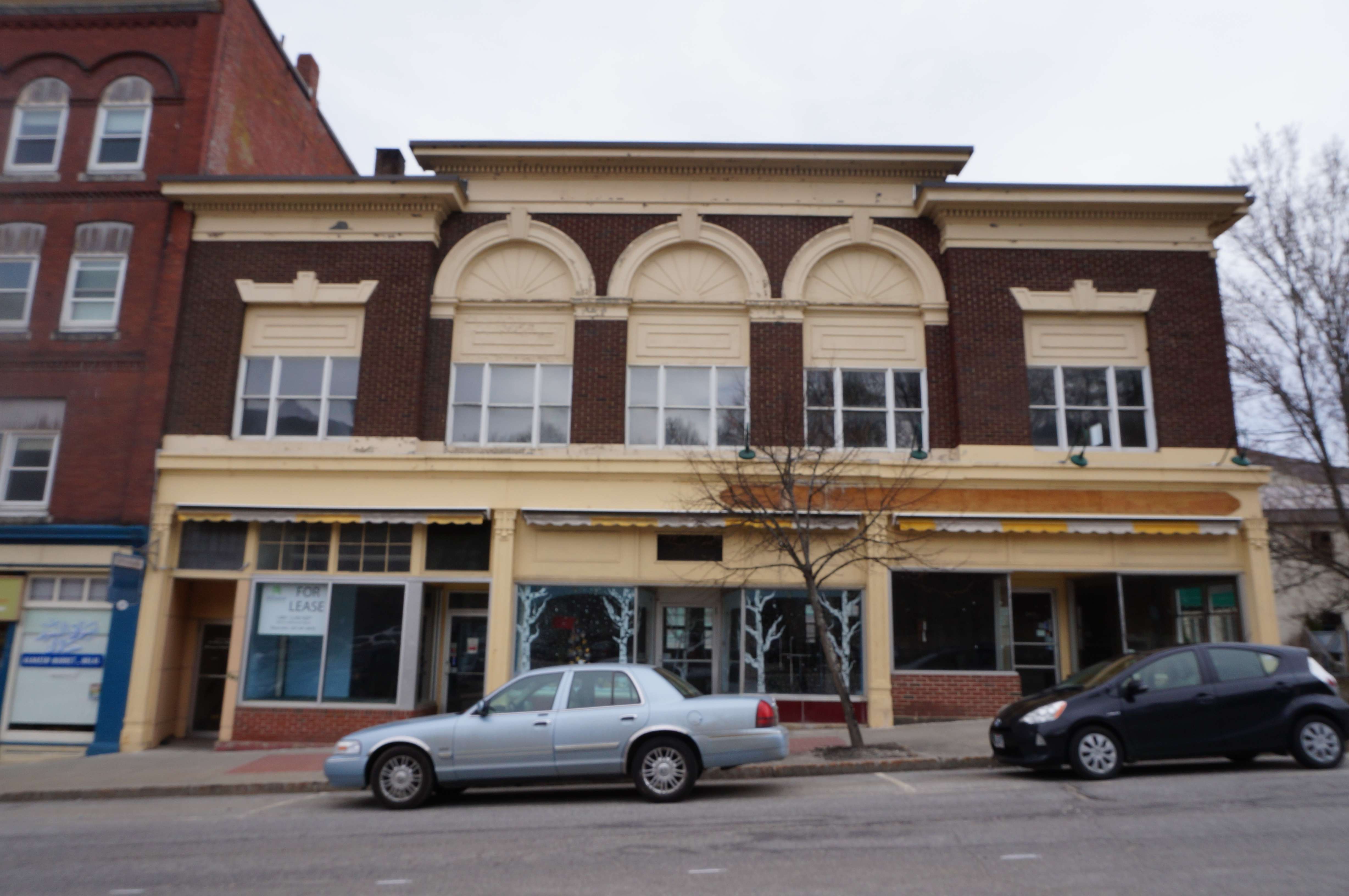
Maintaining the character
At the other end of downtown, Matt and Heather Pouliot also see the possibilities for the New Purinton Brothers Block at 341-347 Water St.
Built in 1919, it has two floors visible from Water Street, with a basement accessed by a side door, that still sports a green awning, long the trademark of Hazel Green's bar and restaurant, which was in the basement for decades. It most recently was Delia's Irish Pub and Restaurant, which kept the green-awning tradition.
The retail space on the ground floor of the 16,128-square-foot building had been a pawn shop for the past 20 years. The pawn shop moved out last fall. The former offices on the upper floor have been long vacant.
Pouliot, owning the building as Alliance Properties LLC, sees beyond the acoustic tile ceilings, peeling paint and dirty linoleum to what the building should be.
The building is one of 51 buildings downtown that are on the National Register of Historic Places, and Pouliot plans to use historic renovation tax credits as part of his redevelopment tool kit. The work will be done by Peachey Builders, of Augusta.
The layout of the residential floor is a big selling point. It has a unique hub-and-spoke design, with a center shared space topped by a 20-foot-high octagonal dome surrounded by windows. The feature was long covered with acoustic tiles, and when some of them were recently taken down, the original chandelier still dangled in the center.
Once completed, the building will have two two-bedroom apartments, three one-bedroom and three studios. There will also be a small gym, a laundry area and the communal space under the 20-foot-high dome.
The two-bedroom apartments, both on the river-side corners of the building, have expansive views of the Kennebec River and the city.
"I'm excited about maintaining the hub-and-spoke design," he said. "I really wanted to maintain the architectural integrity of the building."
Another thing he's excited about are the large windows. "It really maximizes the natural light," he said.
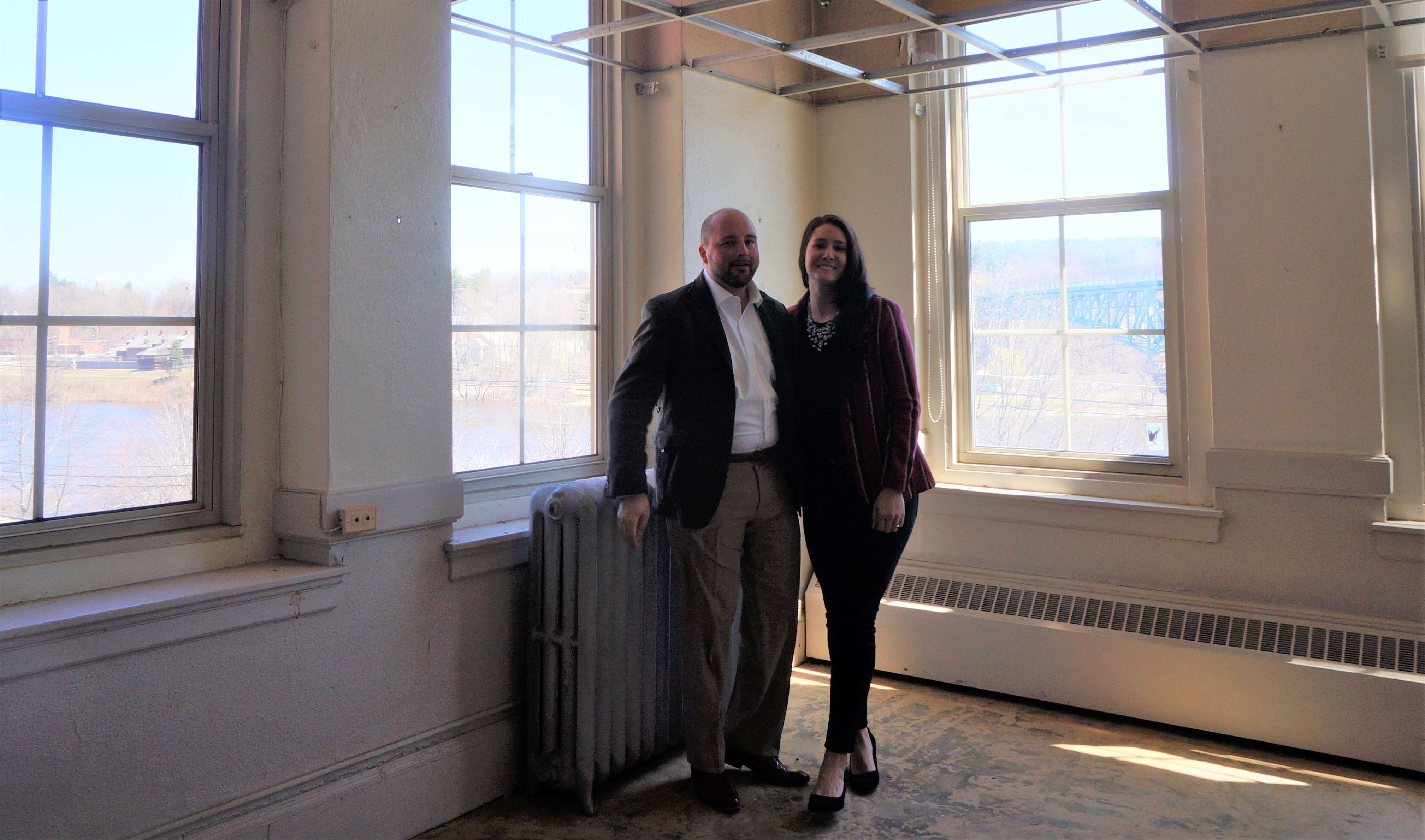
The Caucus Room
An event room that would hold more than 240 people is planned for the basement area that was once Hazel Green's. The area is 5,000 square feet, and the public space would be more than 4,000, with the rest as kitchen space, bathrooms and a conference room.
The space will be called The Caucus Room in a nod to the nearby State House.
Heather Pouliot said there's a need for event space that size in Augusta, where large space is limited. "All there is [for large events] is the Civic Center and the Armory," she said.
At the end of Water Street's business district, the building is across the street from a city parking lot and next door to another one.
The Pouliots said they may also eventually find a use for the sub-basement, which opens onto Front Street, along the river.
The ground-floor retail, a total of 5,000 square feet, is split into three bays, which have descending floor space to accommodate the street incline. The middle bay was the longtime home of Arlene's Bakery, which closed more than 20 years ago, and they said they're hoping to get interest from another baker to fill the space.
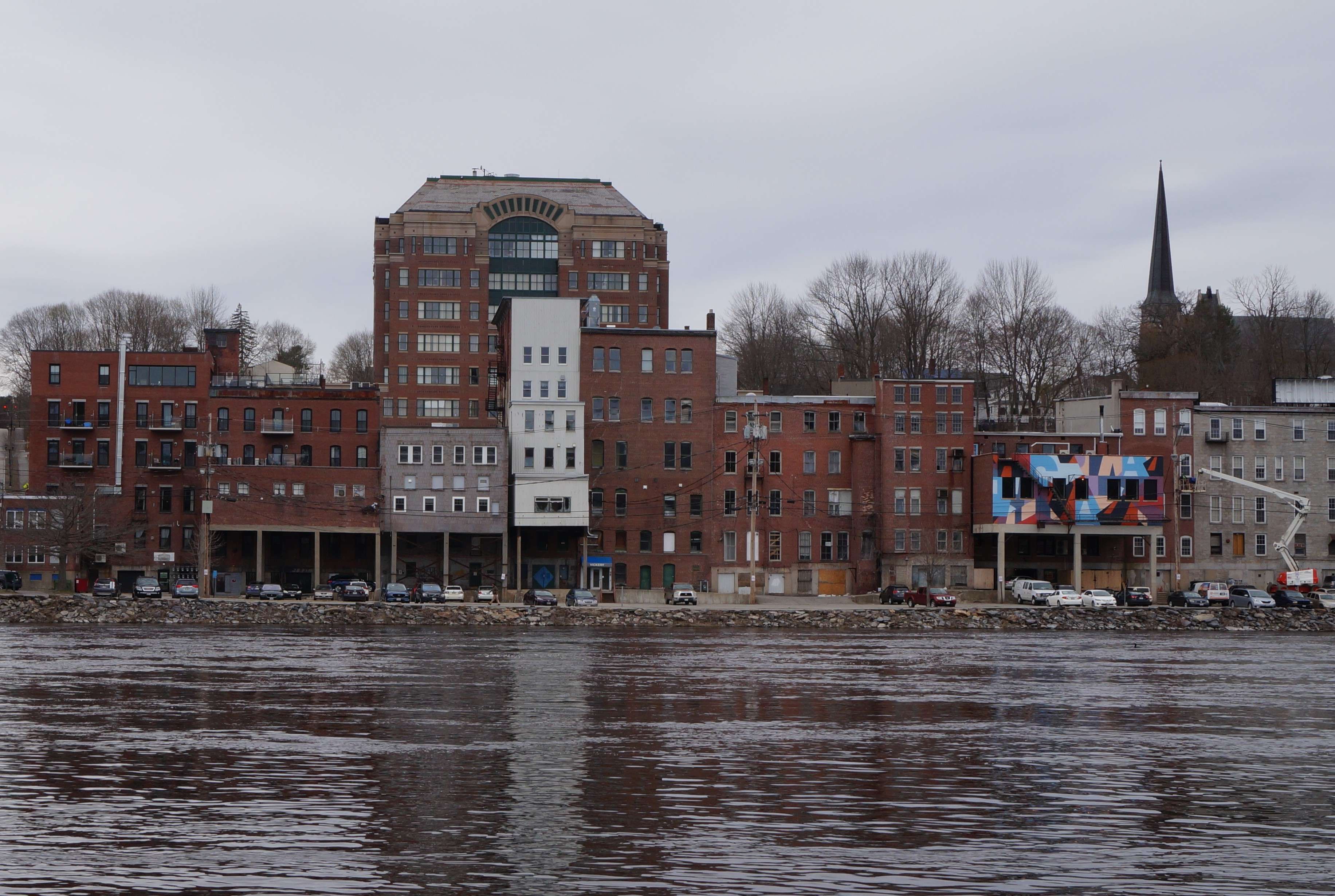
'People want to live here'
As a real estate broker, Pouliot said he's frequently asked about living space downtown, noting that there's a need for market-rate apartments, both the larger ones and the studios.
The growth of residential space downtown, where there was none 10 years ago, has been "organic," he said.
"The more people who live here and tell people they're living here, the more people will come," he said. He said the historic aspect of the housing, the setting downtown and the quality of renovations downtown are all a selling point.
"It's quality housing, and people hear about it," he said.
The different sizes of the apartments offer different price options, he said. The building is close by the University of Maine at Augusta architecture school, which is in Handley Hall at 331 Water St., and students may find the studio apartments appealing, he said.
"There are all sorts of people, living and working in all different areas, who want to live down here," Heather Pouliot added. "We hear it all the time, people want to live here."
The New Purinton Brothers Block is next door to the Old Purinton Block, also a former Masonic hall, at 333-339 Water St. The 1898 building, being renovated as an Opportunity Zone project, will add 30 residential units.
Other projects include renovation of the Vickery Building, which will add 24 and downtown businessman Tobias Parkhurst plans to add two in a building he's renovating.
Aside from the residential, retail has been picking up. Two decades ago, downtown began to evolve into a service center, until retail had all but disappeared.
In the past couple years, several businesses have opened, and the Augusta Downtown Alliance website lists 13 restaurants and bars, one of the most recent the Huiskamer Coffee House, at 216 Water St., which opened in February.
The Augusta Downtown Alliance is also promoting a "pop-up" retail program for this summer, where businesses can take advantage of a short-term lease for three months, largely as an effort to bring some life to Front Street.
Front Street, a riverside park and parking lot behind the buildings on Water Street, is already the venue for Cushnoc Brewing Co.'s Meet Me Out Back outdoor space.
"It's a great spot in the summer," Heather Pouliot said.
She said several applications have been submitted, and even ones that may not be a match for the program may be potential longer-term retail tenants downtown.
The two blocks of Water Street between Winthrop and Bridge streets that have been one-way for seven decades will be converted back to two-way this summer, which businesses say will help make downtown more welcoming.
Michael Hall, executive director of the downtown alliance, said the move will have a major impact by simplifying navigability, increasing daily traffic counts, increasing business exposure and making it more pedestrian friendly by slowing cars down.
"Out of almost 40 case studies we have looked at, every city that has converted to two-way (regardless of population) has seen net benefits in their central cores resulting in decreased vacancy rates, more business exposure and increased walkability measures," he said. He cited similar moves in Waterville and Rockland.
"There's a reason why other cities are paying attention to this trend," he said. "They see the same studies we do and the studies all support conversion."
The city has a variety of incentive programs for downtown development, and the area is part of Augusta's Opportunity Zone, which has also drawn increasing interest from developers, Pouliot said.
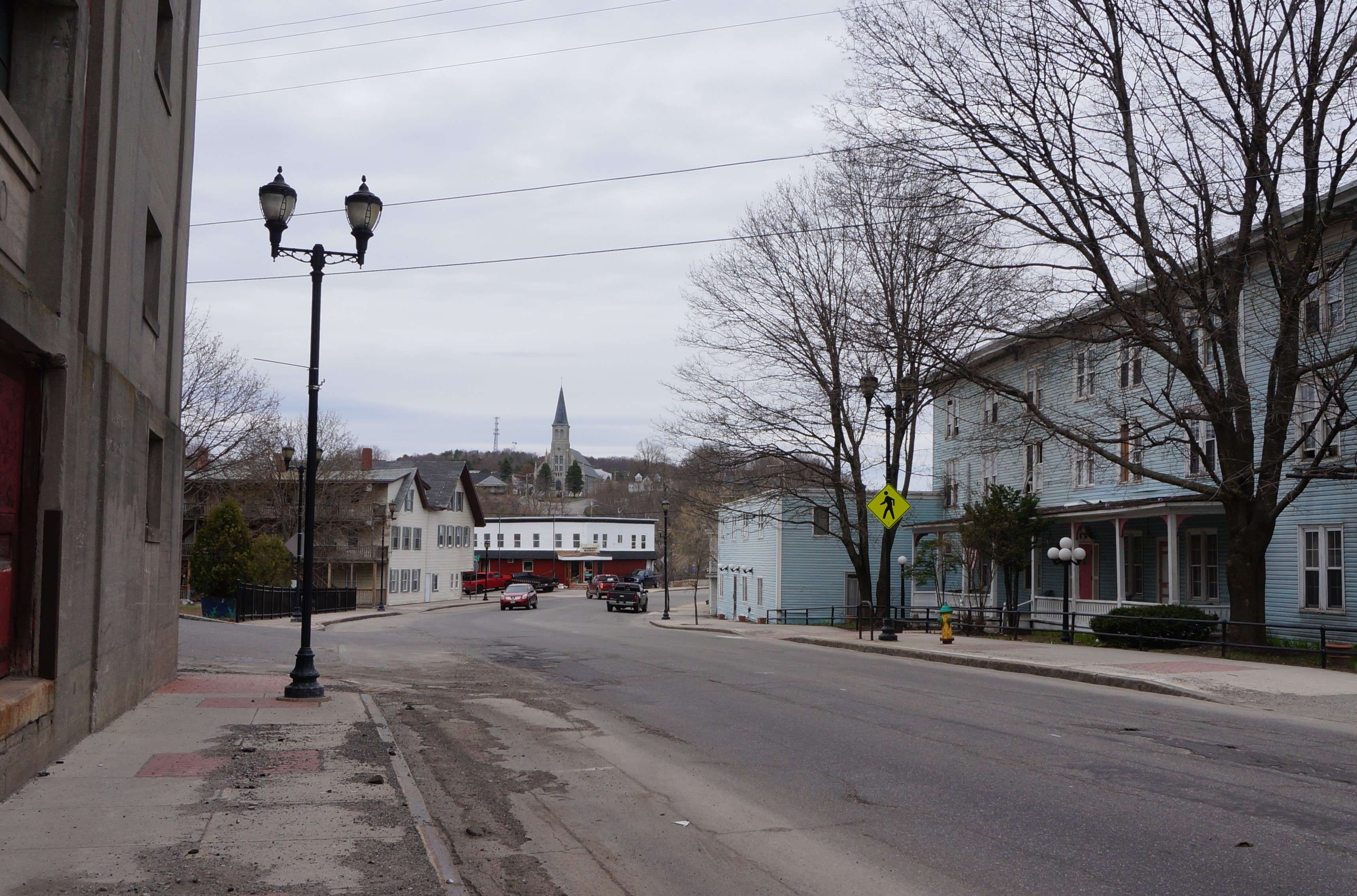
Big hopes for north end
At the north end of Water Street, things have happened more slowly. A large crumbling building with broken windows on the corner of Water and Laurel streets, one of the last vestiges of the Edwards Mill, dominates the three-block stretch. Other buildings are in need of upgrades.
But the neighborhood also is visually appealing, curving along the river, and featuring older clapboard buildings, wrought iron fences and street lights and borders on Mill Park, where the massive Edwards Mill once stood.
The ongoing renovation of the Colonial Theater, Parkhurst's renovation of another building near the Bridge Street end and discussion of moving the Augusta Police Department from Capitol Park to the area have added a spark.
The recent purchase of 19 buildings, including some landmark buildings on the street, by Jim and Rebecca Henry, of Remington Street Properties, South Berwick, are signs it of things to come. Among the buildings they bought is 53 Water St., a baby-blue wooden building that was once the Hotel Arnold. The also bought two Bond Street historic mill housing duplexes up the block from Boulerice's project.
"My hope is that the north end is really the next big thing to take off," Hall said. "Right now, we have seen great strides made on the areas south of Bridge and Winthrop streets, but have yet to realize the full potential of the north end. However, there are signs that this is changing and I feel that within two years' time, the north end as we know it now will be fundamentally transformed for the better."
Boulerice said the apartments at 28 Water St. will be ready for occupancy mid-summer, and the ground-floor space should be done by the end of the summer. He has no doubt the north end will take off.
"I'm very excited," he said.
While some developers have been hesitant to take a chance on north Water Street, he said, "I think there's a kind of domino effect happening."
"I'm attracted to Augusta," he said. "Not only is it the capital of our state, but I see a lot of possibilities in this area that people in southern Maine don't see," he said. "I'm excited to be here."










0 Comments